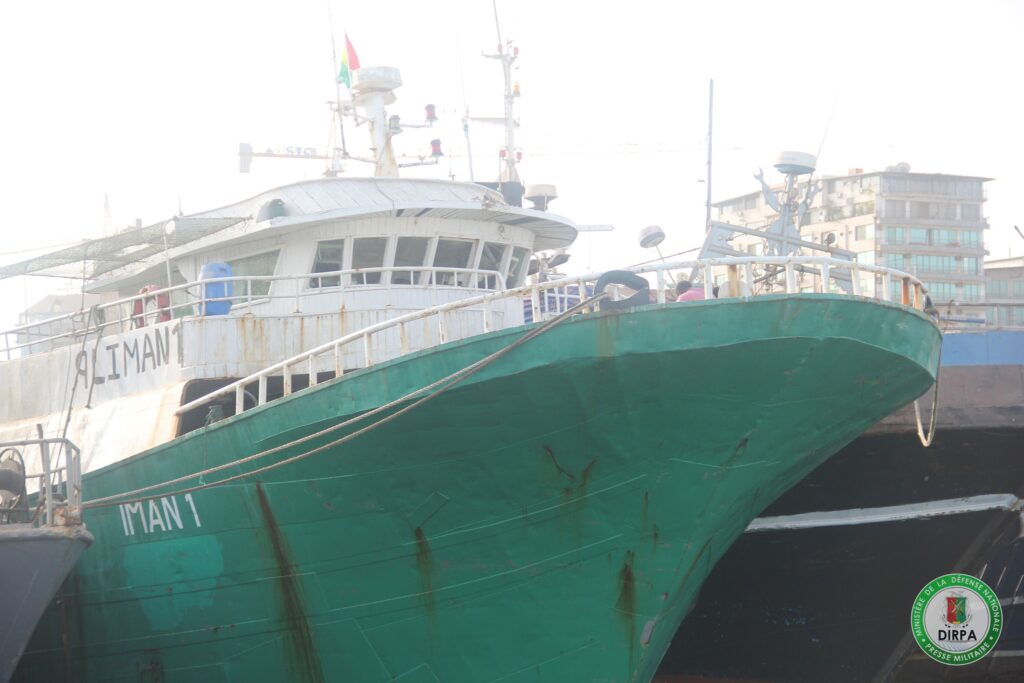ADF STAFF
The Guinean Navy found more than 1.5 tons of cocaine on board a fishing vessel off the coast during an inspection in early April.
The seizure illustrates a trend in West Africa, where at least 57 tons of cocaine were seized in or en route to the region between 2019 and 2022, according to a report by the United Nations Office on Drugs and Crime (UNODC).
Over that period, authorities seized 16.6 tons of cocaine in Cabo Verde, 4.7 tons in Senegal and 3.9 tons in Benin.
The report labeled West African nations — including Benin, Côte d’Ivoire, Ghana, Guinea, Guinea-Bissau, Nigeria and Senegal — and Central Africa as new cocaine hot spots as production of the drug rose by 35% worldwide between 2021 and 2022.
While the global pandemic disrupted the illegal drug trade, “the most recent data suggests this slump has had little impact on longer-term trends,” the report said. “The global supply of cocaine is at record levels.”
The report underlined a trend that analysts have noticed for years: Cocaine trafficked from South America through West Africa is no longer destined almost exclusively for Europe. It is increasingly sold and consumed by people on the African continent.
“Many regions are showing a steady rise in cocaine users,” UNODC spokesperson Stéphane Dujarric said during a media briefing. “The report warns that while cocaine markets remain quite concentrated in the Americas and parts of Europe, there is strong potential for expansion in Africa and Asia.”
The report found that crime syndicates in Africa are farming out work to local “service providers” who manage parts of the cocaine supply chain — and sell it to locals.
Service providers typically collect cocaine from its place of entry. They often deliver the drug for a fee, which could be paid in money or in-kind services, the latter of such transaction “drives cocaine availability on the domestic market of the transit countries,” the report said.
In West Africa, the world’s epicenter for illegal fishing, evidence suggests that small watercraft are increasingly used to traffic cocaine. The drug is often offloaded from vessels before they reach port and transferred to warehouses on land by vessels retrofitted to transport 1 to 1.5 tons of cocaine, according to the report.
The work of one international crime syndicate was exposed in September 2022 when Nigeria’s National Drug Law Enforcement Agency (NDLEA) seized 1.8 tons of cocaine at a warehouse in Lagos State.
It was one of the “single biggest singular cocaine seizures” in the agency’s history, NDLEA spokesperson Femi Babafemi said in a report by Nigeria’s Channels Television. Babafemi added that the haul had a street value of more than $278 million.
Babafemi spoke as five dejected-looking men in handcuffs stood behind a display of cocaine packed in luggage and large bricks tightly wrapped in plastic. He said the men were members of a crime syndicate that the agency had trailed since 2018.
“By the grace of God, we were able to track them down to this beauty,” Babafemi said, as he spread his arms and looked at the ramshackle building behind him. “It looks unoccupied, but then, it is a warehouse for this international cartel.”
Massive cocaine seizures have continued in 2023. The Senegalese Navy seized about 770 kilograms of cocaine from a ship sailing in the waters off Dakar in late January.
In late March, the French Navy seized 6 tons of cocaine from a boat sailing in the Gulf of Guinea. It was the largest seizure in the region since 2019 when nearly 10 tons of cocaine was taken from a ship sailing in Cabo Verdean waters, according to maritime news service gCaptain.

